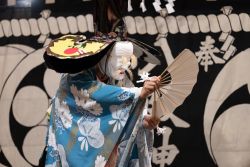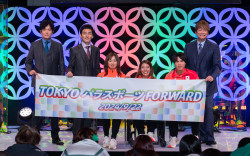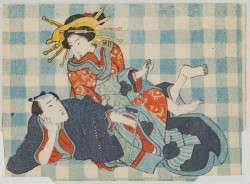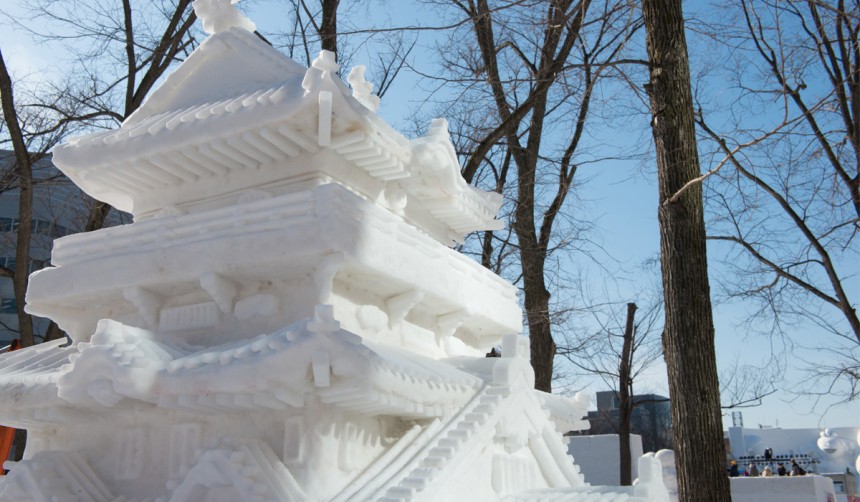
Sapporo is well-known for its Snow Festival, known in Japanese as “Yuki Matsuri.” An annual weeklong celebration held in early February, Yuki Matsuri began in 1950 after a group of Sapporo high school students built six snow statues in Odori Park. Despite the first festival’s modest size, the sculptures attracted a crowd of 50,000 people and led to what is today one of Japan’s biggest tourist attractions, drawing in around two million people every year.
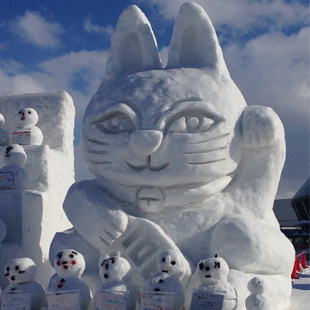
Just nine years after its debut, Yuki Matsuri had attracted 2,500 participants, gaining wide media exposure throughout Japan for the first time. Less than 25 years later, the festival’s popularity became nothing less than a cultural phenomenon. The Winter Olympics of 1972, as well as an international snow sculpture contest in 1974, helped bring Yuki Matsuri to a global audience. By the 1980s, the event had become so popular that two extra locations were opened up to accommodate more sculptures. Some neon-lit ice sculptures were displayed for the first time in 1983, and the following year, the festival expanded from a five-day to a weeklong event.
The festival’s main location remains at Odori Park, and spreads across the entire 1.5-kilometer expanse. Vendors selling local food like grilled seafood, baked sweet potato, and seasoned, grilled lamb, set up stalls throughout the park. After sunset, specially designed illuminations highlight the snow and ice statues at the venue.
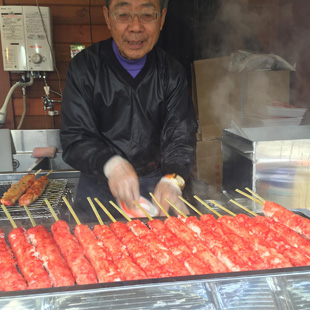
The sculptures have a wide variety of designs. Many of them recreate iconic scenes from Japanese pop culture—such as Nintendo characters and famous mangas like Attack on Titan—to traditional designs. High school students have maintained the tradition of supporting Yuki Matsuri, and a section of Odori Park is created specially to show off their work.
Yuki Matsuri also showcases special performances featuring Sapporo locals, including snowboarding and ice-skating demonstrations, which visitors can enjoy free of charge.
In addition to Odori Park, the festival has two other sites around the city. The Susukino Site is a mere 15 minutes from Odori Park and is home to the festival’s many ice sculptures that, like at Odori, are lit up at night by illumination displays. Visitors can even interact with the artists behind the frosty creations, which include slides and chairs delicately constructed out of ice. The Susukino Site also has an ice bar, where visitors can enjoy a variety of alcoholic and non-alcoholic hot drinks, such as the local hot and sweetened sake, which are served in cups fashioned from ice. Visitors can also watch the ice sculpture contest, with participants from around the world competing.

The Tsudome Site, the most child-friendly of the different sites, is the furthest away, although conveniently accessible by buses that run from downtown Sapporo. The dome offers a place to warm up and plenty of bouncy castles and obstacle courses designed for young children. A cafeteria is set up with food stands offering noodles and other local cuisines to give families a chance to sit down and relax. Outside the dome, there are a variety of snow slides and a snow raft, making it easy to have a little adventure at Yuki Matsuri. The rides all cost under ¥1,000, and are fun for all ages.
Sapporo has a variety of accommodation to suit all styles and budgets. But as Yuki Matsuri continues to gain in popularity, hotels and hostels are quick to fill up, so booking several months in advance is recommended.



